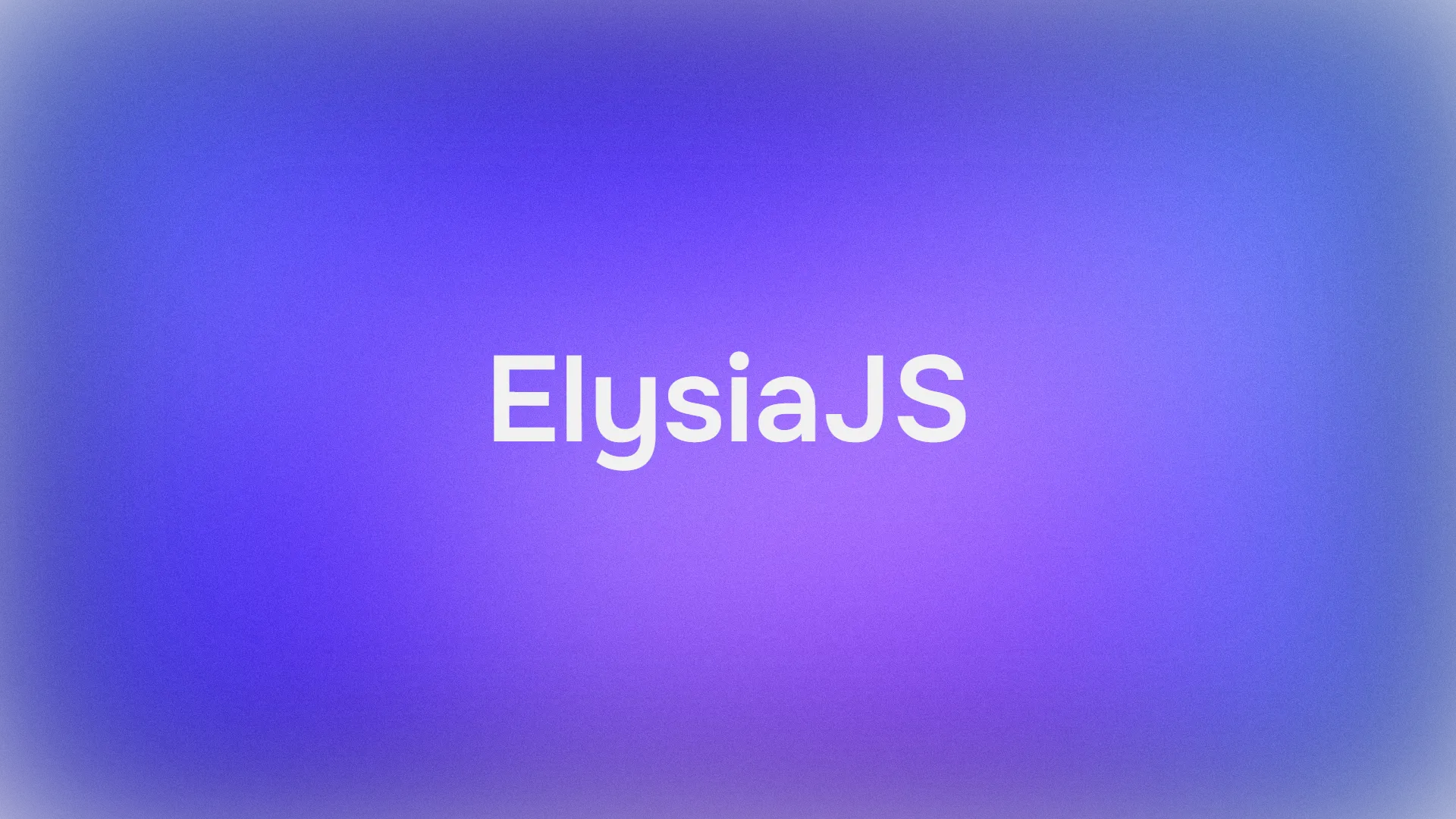What Is Warp Terminal?
Warp Terminal (often stylized simply as Warp) is a modern, Rust Based, GPU-accelerated terminal designed to speed up your command-line experience.

Built with developers in mind, it rethinks many traditional user interaction paradigms found in older terminal emulators. Warp Terminal comes equipped with features like auto-completion, command suggestions, AI-assisted search, and more. It aims to transform the terminal into a more collaborative, intuitive, and efficient space.
Why might you choose Warp Terminal over standard terminals or other popular alternatives, like Ghostty? Warp Terminal’s intelligent design focuses on:
- Real-time and predictive autocompletion.
- Seamless text reflow and GPU-accelerated rendering.
- Better session management.
- Collaborative features.
- Cross-platform compatibility.
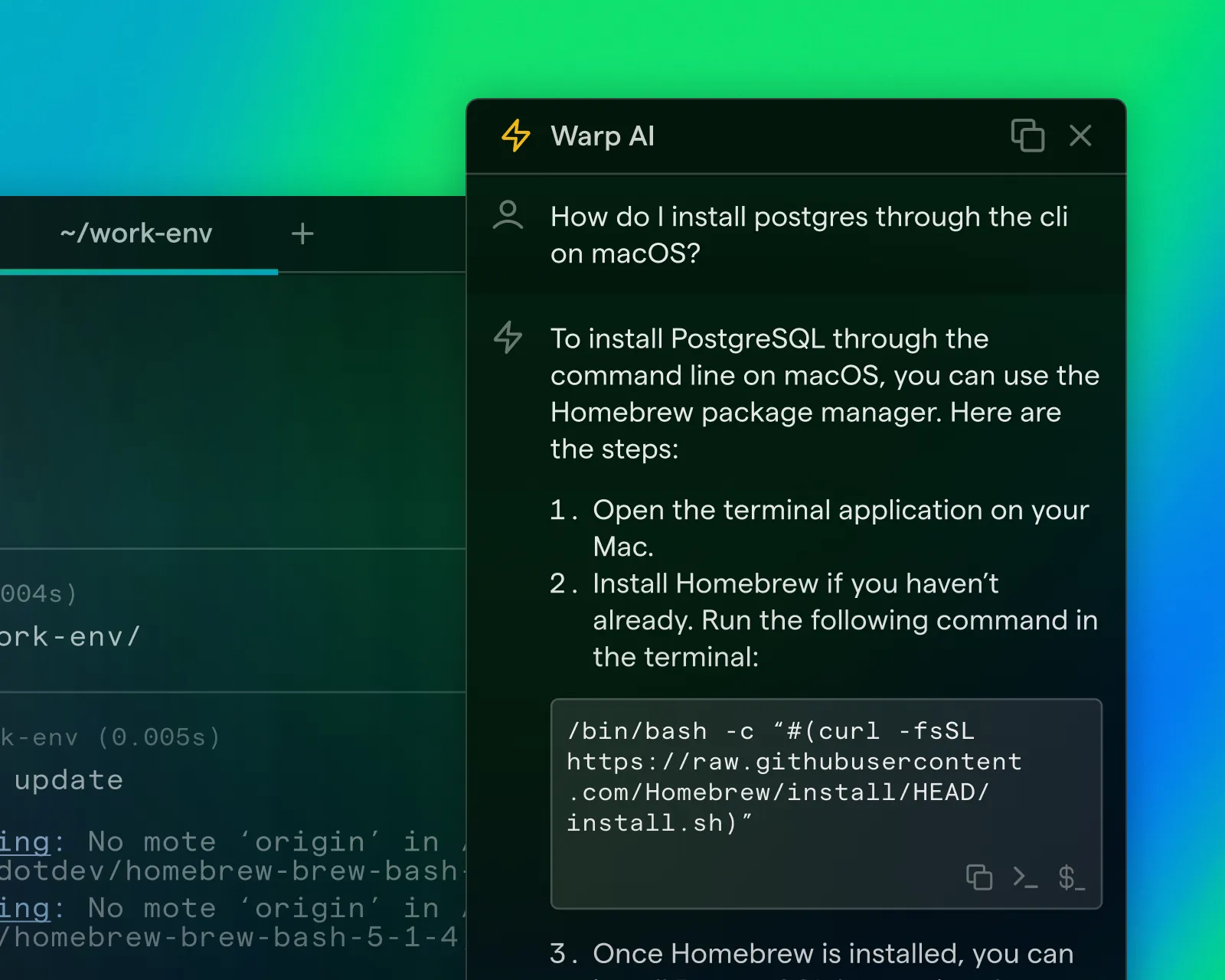
While Ghostty is another modern terminal aiming to enhance command line usage, Warp Terminal differentiates itself with a polished UI, advanced features, and a robust team backing its development. The next sections will take you through the download, installation, and setup processes on major operating systems.
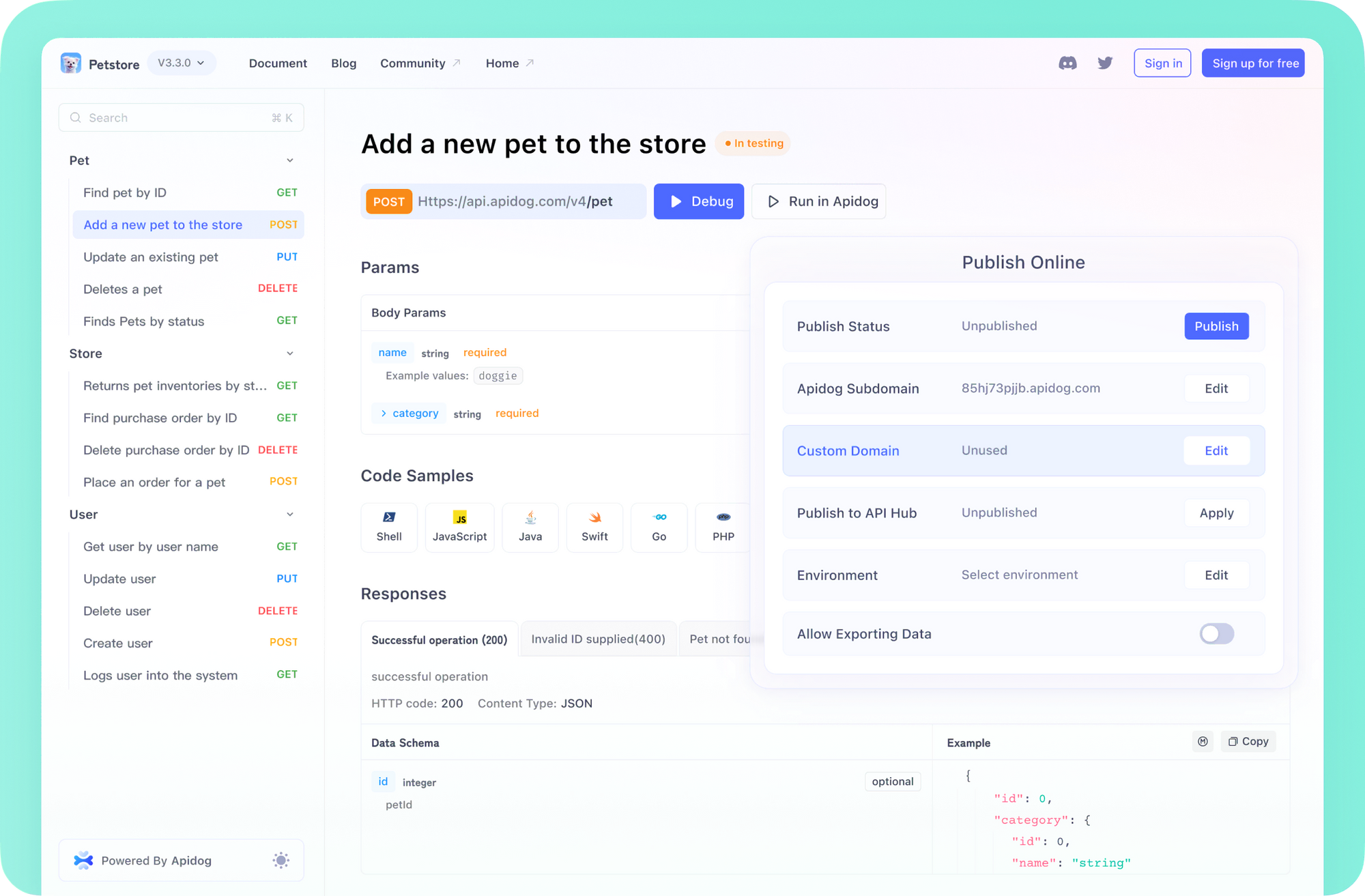
Install Warp Terminal on macOS
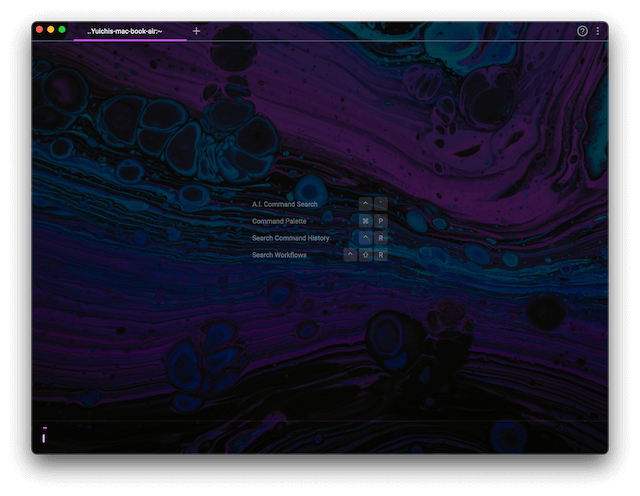
Installing Warp Terminal on macOS is straightforward, especially if you’re familiar with using Homebrew or similar package managers. Follow these steps:
- Download Warp Terminal
Visit the official Warp Terminal website: https://www.warp.dev
Look for the “Download for macOS” button and click on it.
Alternatively, if Homebrew support is available, open your current terminal and execute:
brew install --cask warp
Once downloaded, you should have a .dmg file (if you chose the manual installer).
2. Install from DMG
- Open the downloaded
.dmgfile. - Drag and drop the Warp Terminal icon into your “Applications” folder.
- Eject the DMG file once finished.
3. Grant Permissions & Launch
- If needed, grant permissions for Warp Terminal in your macOS “Security & Privacy” settings.
- Launch Warp Terminal from your Applications folder or via Spotlight by typing “Warp Terminal.”
4. Initial Setup
- The first time you run Warp Terminal, you may see an introduction or initial setup. Follow any prompts to configure preferences, including fonts, shell integrations (zsh, bash, fish), and color themes.
5. Verify Installation
- Type
warp --versionin the Warp Terminal to confirm that Warp Terminal is installed successfully.
Install Warp Terminal on Windows
Although Warp Terminal was initially developed for macOS, more recent versions and official channels have expanded Windows support. This is still considered early in some respects, so check official documentation for updates. Here’s how to install Warp Terminal on Windows:
Download the Windows Installer
- Head to the official Warp Terminal site: https://www.warp.dev.
- Look for the Windows download link or the official Windows installer.
- Save the
.exefile in a convenient folder.
Run the Installer
- Double-click the Warp Terminal
.exeinstaller. - Follow the on-screen instructions, such as accepting the license agreement and choosing the install location.
- The installer will place Warp Terminal on your machine so it is accessible from your Start Menu.
Post-Installation Setup
- On first launch, Warp Terminal might prompt you with a guided walkthrough:
- Choose your default shell (PowerShell, Git Bash, or WSL).
- Opt in or out of telemetry data (if prompted).
- Select color theme and font options.
Running Warp Terminal
You can launch Warp Terminal from the Start Menu by typing “Warp Terminal.”
Verify everything is working by checking the version:
warp --version
Updating Warp Terminal
- Keep an eye on Warp Terminal’s built-in update feature or manually check for new releases periodically.
- Because Windows support may be in earlier stages, updates can come frequently.
Installing Warp Terminal on Linux
Warp Terminal’s support on Linux may differ by distribution, but the developers often provide a universal package or an AppImage. Here’s a general approach:
Download the Warp Terminal AppImage or Package
- Visit the official Warp Terminal site: https://www.warp.dev.
- Under the “Linux” section, pick the AppImage, DEB, or RPM package (depending on your distribution).
- Save it to your preferred download folder.
Install or Make the Binary Executable
If you have a .deb package (Ubuntu/Debian-based) or .rpm (Fedora/RedHat-based), you can install it with:
# For DEB (Ubuntu/Debian)
sudo dpkg -i warp-terminal.deb
# For RPM (Fedora/RedHat)
sudo rpm -i warp-terminal.rpm
For an AppImage, mark it as executable:
chmod +x Warp-Terminal.AppImage
Then run the AppImage:
./Warp-Terminal.AppImage
Initial Configuration
- The first launch may open a graphical welcome wizard or prompt you in the terminal to choose a theme, shell integration, etc.
Create a Shortcut
If using an AppImage, you can manually create a desktop entry so that Warp Terminal appears in your application launcher.
# Example for Gnome-based systems
cp warp-terminal.desktop ~/.local/share/applications/
Adjust the Exec line in your .desktop file to point to the location of your Warp Terminal executable.
Verify
Check Warp Terminal’s version:
warp --version
Getting Started with Warp Terminal
Once Warp Terminal is installed, you can begin customizing your command-line experience. Below are common steps to get you started:
- Selecting a Shell
- Warp Terminal can interface with bash, zsh, fish, PowerShell, and more.
- If you’re on macOS or Linux, zsh is increasingly the default shell. Windows users might opt for PowerShell or WSL.
- Adjust your default shell within Warp Terminal’s settings if you want a different experience.
2. Themes & Layout
- Warp Terminal typically has a command palette or a dedicated settings panel for picking from various color schemes.
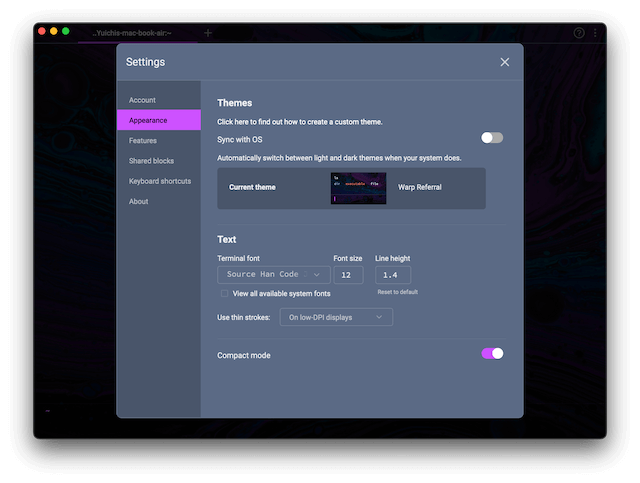
- Explore built-in themes or create your own by editing the settings file. Warp Terminal allows for GPU-accelerated fonts and dynamic backgrounds if your hardware supports it.
3. Autocompletion & AI Assistance

- Warp Terminal’s built-in intelligence often includes syntax highlighting, real-time completions, and suggestions.
- Press TAB or an assigned shortcut to accept suggestions.
- Some advanced AI features require internet connectivity to function (for example, if Warp Terminal integrates with GPT-based completions or cloud-based suggestions).
4. Command Output Blocks
- One unique aspect of Warp Terminal is how it can treat command outputs as interactive blocks, making it simpler to navigate and copy/paste content.
- This block-based approach also allows resizing, searching, and referencing older outputs easily.
5. Collaboration
- Warp Terminal may offer collaborative features such as session sharing or integrated chat for pair programming.
- This is especially beneficial when debugging or demonstrating workflows to colleagues.
How to Customize Warp Terminal
Though Warp Terminal includes powerful defaults, customizing your experience is remarkably simple:
No Configuration Files Needed:
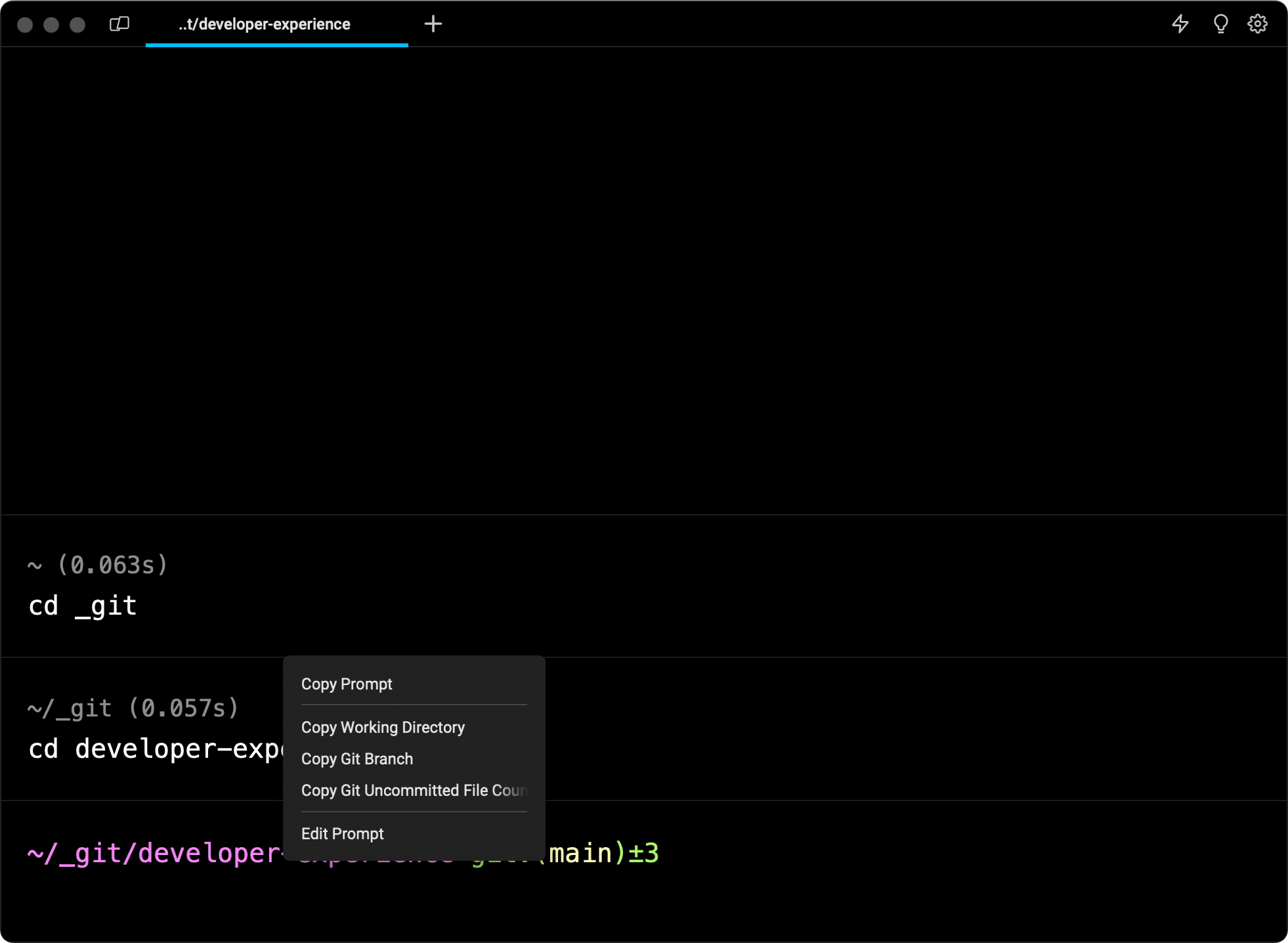
- Right-click on your prompt and select 'Edit prompt' to open the visual prompt editor
- Alternatively, navigate to Settings > Appearance > Prompt and click on your prompt preview
- Drag and drop "context chips" like timestamps, working directory, or Git branch information
- Rearrange chips in any order you prefer, and remove unwanted elements with a simple click
- Save changes to immediately apply your customized prompt across all sessions
Dynamic Context Updates:
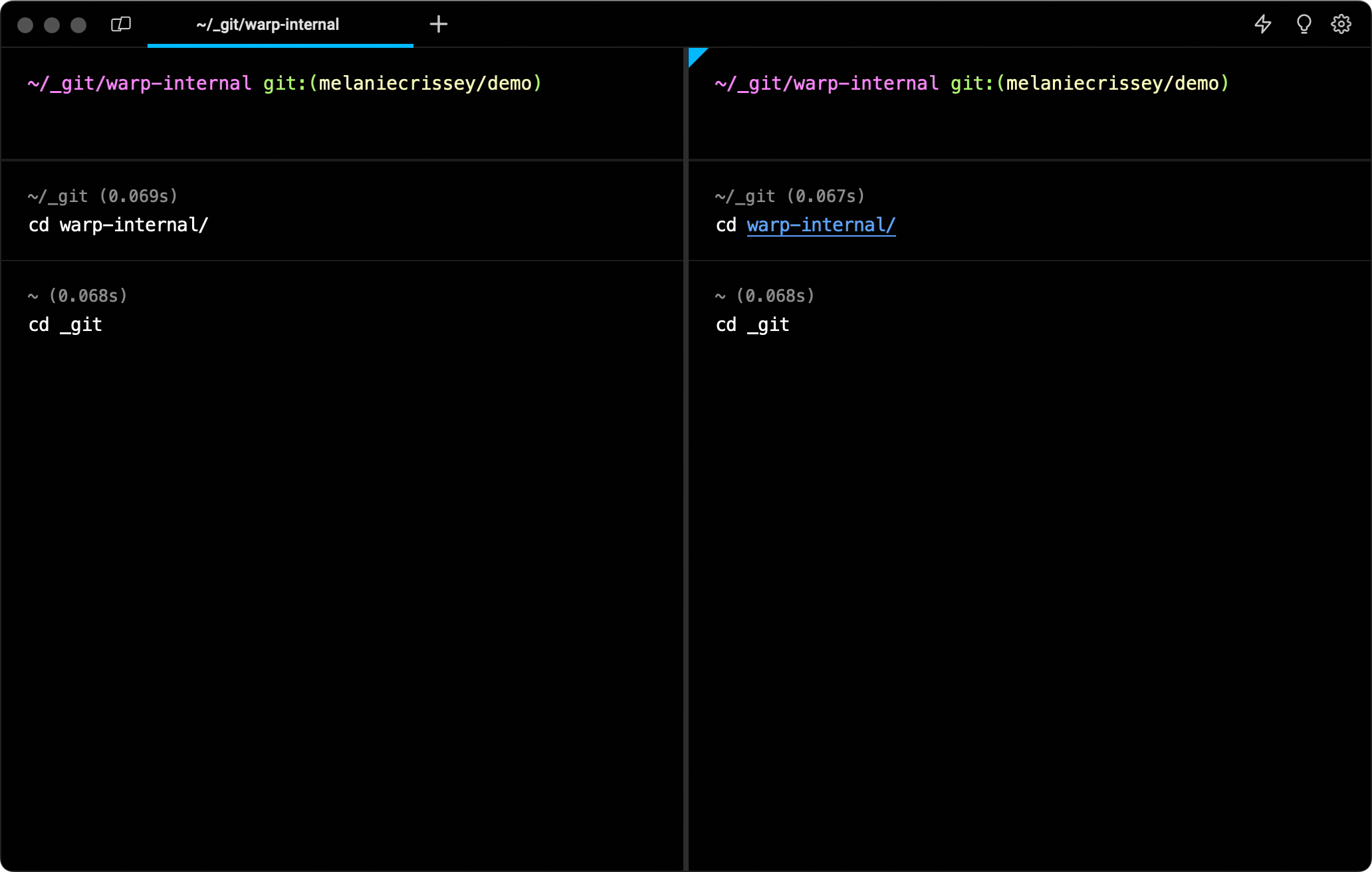
- Your customized prompt automatically updates across all terminal sessions in real-time
- Change a Git branch in one window and watch it update in all sessions with the same repository
- Makes context-switching between different projects much less confusing
Theme Preferences:
- Configure dark mode or choose from other available color schemes
- Select your preferred monospaced fonts, including those with Powerline support
Shell Integration:
- Works seamlessly with popular shells like zsh and fish
- Compatible with shell customization tools like oh-my-zsh
- Pairs well with Windows Subsystem for Linux (WSL) for Windows users
Further Extensions:
- Consult the official documentation for additional customization options
- Join the Warp community Discord to share your custom setups and discover tips from other users
The visual prompt builder eliminates the need to edit configuration files manually while still giving you the flexibility to display exactly the information you need at a glance.
Warp Terminal vs. Ghostty and iTerm2
Warp Terminal is not the only modern terminal vying for developer mindshare. Below is a quick comparison with Ghostty, as well as referencing other favorites like iTerm2, Windows Terminal, Hyper, and Alacritty.
- Warp vs. Ghostty
- User Interface & Design: Warp Terminal is known for a sleek, minimalistic design with advanced features accessible in a straightforward manner. Ghostty also focuses on minimalism but typically offers fewer integrated features out-of-the-box. Users might find Warp Terminal’s block-based approach more powerful for day-to-day tasks.
- Performance: Both are fairly snappy, but Warp Terminal has extensive GPU-acceleration for fast rendering. Ghostty might rely more heavily on your CPU.
- Ecosystem & Updates: Warp Terminal sees frequent updates and has a well-documented roadmap. Ghostty’s community might be smaller, leading to fewer frequent releases.
2. Warp vs. iTerm2 (macOS-specific)
- Features: iTerm2 is beloved on macOS because of split panes, robust scripting, and advanced data detection. Warp Terminal sets itself apart by focusing on AI-driven suggestions, collaboration, and a block-based UI.
- Ease of Use: iTerm2 requires more manual configuration for certain features. Warp Terminal tries to be more plug-and-play with modern defaults.
3. Warp Terminal vs. Windows Terminal
- Platform: Windows Terminal is a first-party Microsoft solution for Windows environments. It seamlessly integrates multiple shells (PowerShell, CMD, WSL) into one interface.
- Design Approach: Warp Terminal is cross-platform and user-experience-driven, offering features like advanced suggestions and GPU-acceleration. Windows Terminal is also quite sleek, but lacks some of the AI-driven features built into Warp Terminal.
4. Warp Terminal vs. Hyper
- Basis: Hyper is built on web technologies (Electron), giving it a robust ecosystem of plugins and themes. Warp Terminal focuses on native performance and GPU rendering rather than web-based approaches.
- Plugin Ecosystem: Hyper’s strength lies in its plugin architecture. Warp Terminal is a more curated environment seeking to minimize the need for extensive plugin usage.
5. Warp Terminal vs. Alacritty
- Performance: Alacritty is often touted as the fastest terminal due to GPU usage. Warp Terminal also heavily uses GPU rendering, but it adds more user-friendly features and an interactive design.
- Feature Set: Alacritty aims to be minimalistic, focusing on raw speed and simplicity. Warp Terminal’s advanced features (blocks, collaboration, AI-driven completions) make it more heavyweight.
Overall, Warp Terminal carves out a niche for users who desire a polished, feature-rich, and collaborative terminal experience across platforms. Compared to Ghostty and others, it stands out by integrating modern capabilities while maintaining strong performance.
Conclusion
Warp Terminal offers a cutting-edge experience for command-line enthusiasts across macOS, Windows, and Linux. By providing GPU-acceleration, AI-driven suggestions, and an innovative block-based interface, it stands out among modern terminals like Ghostty, iTerm2, Windows Terminal, Hyper, and Alacritty. Whether you’re a developer, system admin, or data scientist, Warp Terminal can transform how you interact with the command line.
In this tutorial, we covered:
- System requirements for Warp Terminal.
- Step-by-step installation instructions for macOS, Windows, and Linux.
- Basic configuration, from choosing a shell to applying themes.
- Comparisons with Ghostty and other popular terminals.
- Advanced features like collaboration, command palettes, and interactive outputs.
- Troubleshooting common issues and maintaining Warp Terminal.
By incorporating Warp Terminal into your daily workflow, you can boost productivity, minimize repetitive tasks, and enhance collaboration. As the terminal continues to evolve with modern demands, Warp Terminal positions itself as a premier choice for tech professionals looking for a polished, feature-rich command-line environment.
Experiment with different configurations, explore the various AI-driven plugins, or share your terminal sessions with colleagues—and discover just how powerful and efficient Warp Terminal can be. Be sure to keep your eye on updates and join the Warp Terminal community to stay informed about the latest features, tips, and real-world use cases. Once you’ve adjusted to Warp Terminal’s advanced approach, you’ll likely wonder how you ever lived without it!

